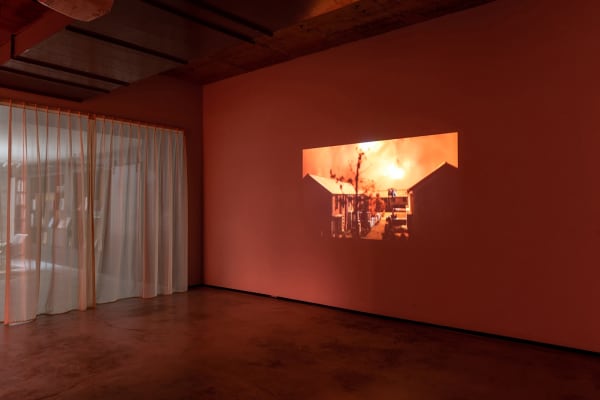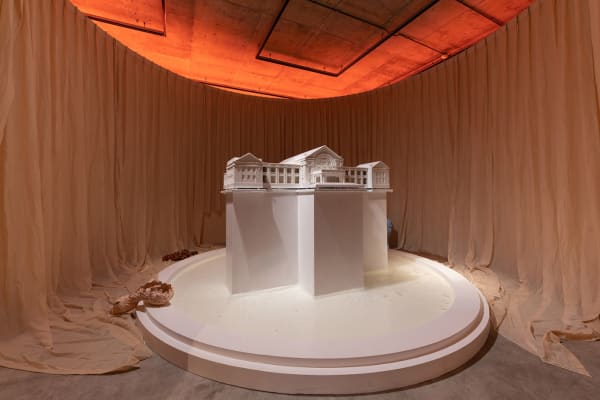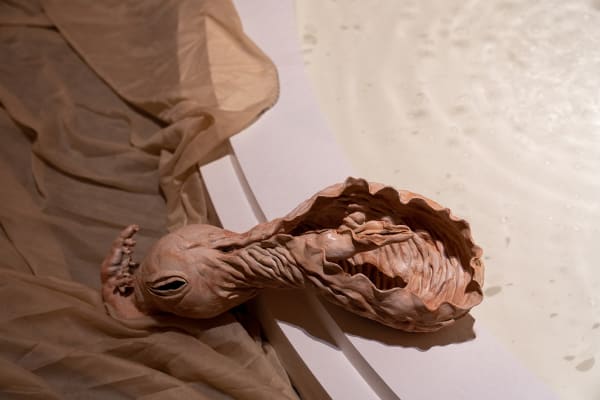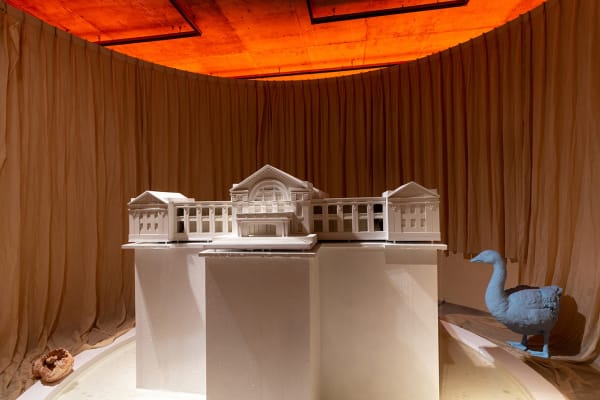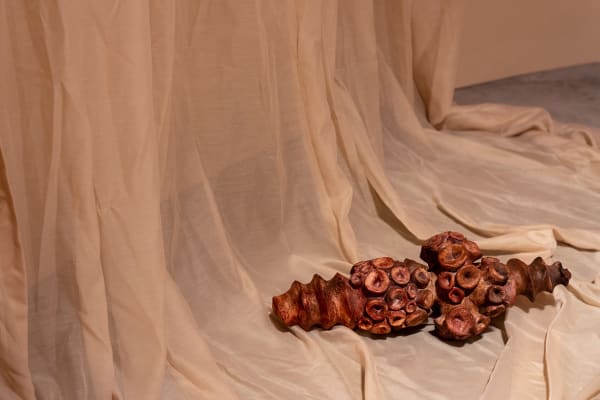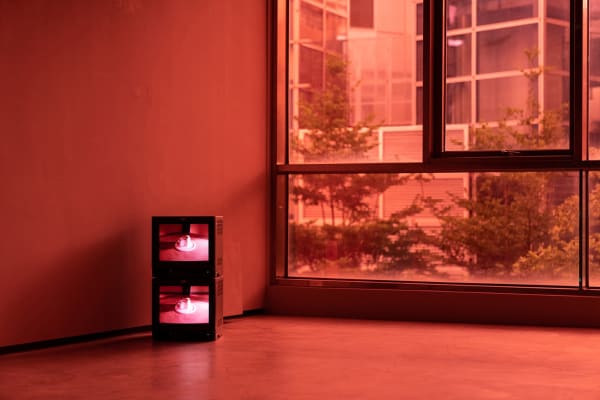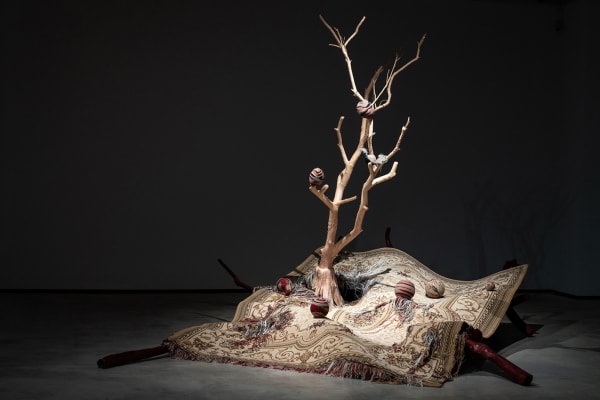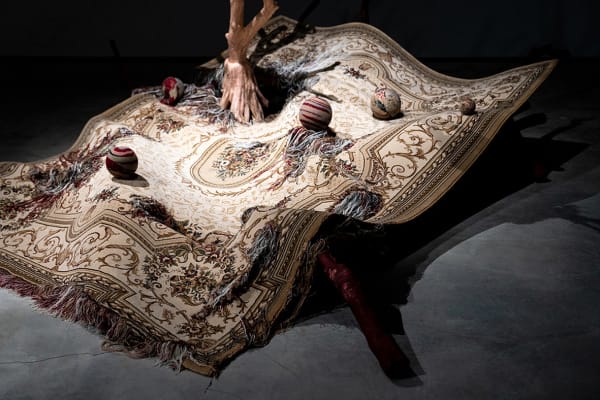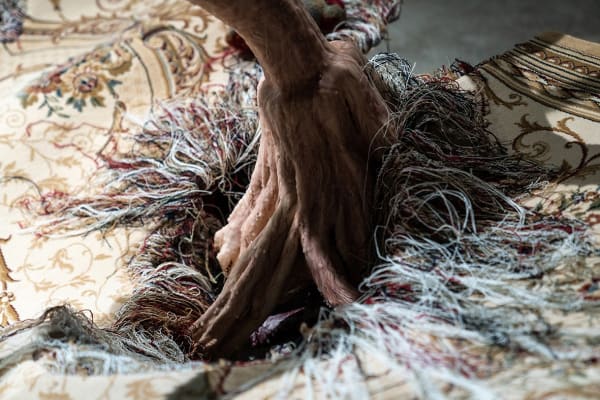How Real Is Yesterday: Kuo Yu-Ping Solo Exhibition
The childhood home of Kuo Yu-Ping’s is one that extends endlessly in her consciousness. Scorching heat and unbearably intense melancholy are always present in her representation of memories of home. How Real Is Yesterday, her first solo exhibition at the TKG+ Projects, inquires into Kuo’s previous body of work through a subtle and complex narrative that revolves around her idea of home. The entire exhibition space embodies her inner landscape, like a park in a dream where each work softly whispers. Double Reading (2019), a video work shot on site at the space, attempts to excavate what lies deep within the artist’s subconscious via images of once-present honor guards, eliciting an inexplicable, haunting state of self-censorship.
Upon her father’s retirement, Kuo and her family left the Zhongxing New Village in Nantou, Taiwan, where she grew up. Stirring a deep attachment to objects and light in her old home, her departure inspired her to search for her roots through art making. In Delay and Pit (2013), memory as an analytic approach of inquiry is used not only for the quest for her identity, but also for the investigation on how structural changes in politics cast an influence on local developments in the course of modernization. The Zhongxing New Village is a delayed projection of KMT’s then “Nanjing Capital Project” back in China. The policy of “infrastructure first” results in significant insufficiency in all other aspects, such as a deserted cultural scene. A new work Is Waking Up (2019), on the other hand, can be considered a hybrid representation of Kuo’s memories — pouring rain and a sewage system with waste water running through, on top of which stands the Zhongxing Auditorium, an architecture of the 50s that looks like a bomber aircraft from a bird’s eye view. It is an allegory of modernity telling the story of a lost plane. It is, too, the artist’s spatial memory of her hometown. Encircled by wooden walls yet present in the exhibition space, the enormous object’s ostensible invisibility closely corresponds to the artist’s state of mind.
Starting in 2016, Kuo began dismantling a piece of carpet in an extremely prolonged, self-torturing, and neurotic manner. Through repetitive and almost ritualistic manual labor, she carefully pulled the threads apart, loosened the wool, and turned them into numerous solid pom-poms. Over time, her body developed a movement pattern most efficient for the task. She could stay in the same position for hours with both arms being the only body parts that frantically moved. It is as if the whole body was isolated in a vacuum, without growing or aging. Continuing the trajectory of Kuo’s artistic practice, this piece of carpet, as an object echoing the motif of ceaseless labor, is part of the sound installation Sleep, Dream, in a Feverish Land (2018). The work attempts to capture the essence of human existence — perpetually engaged in activities of sleeping, eating, and laboring (both physically and mentally). The sound of dismantling carpet, of eating and sleeping, of emotional fluctuations, portrays the never-ending repetition in human life.
In the space with a whole wall of floor-to-ceiling windows, an ambivalent, unsettled sphere like that of the artist’s inner world is invoked. The installations in the exhibition represent the manifold states of the mind while spurring complex dialectical discussions, readily viewed as Kuo’s memorandum on her investigation of what reality is.
Kuo Yu-Ping
Born in Nantou, Taiwan, Kuo Yu-Ping currently lives and works in Taipei. With poetic narratives surrounding her body of work, her practice draws from personal experiences, and explores the relationships between collective consciousness and society, culture, and politics. Manifested across such mediums as video, installation, painting, and performance, her recent major works, Delay and Pit, Eastern Messiah, and Autonomy, pivot around the depiction of trauma in the course of life and the acute sense of void etched in the collective consciousness in East Asia that ripples under modern historical circumstances. Her work in the end becomes a personal identity project where the lack of identity raises titillating tension.
Kuo’s notable exhibitions and recognitions include: Wild Rhizome-2018 Taiwan Biennial, National Taiwan Museum of Fine Arts, Taipei, Taiwan (2018); Taipei Arts Award, Taipei Fine Arts Museum Taipei, Taiwan (2018); Black Ships, Civilization, Remarks, and ______s’ Footprints: From Japanese Modern to East Asian Contemporary Art, Galerie Niched Taipei, Taipei, Taiwan (2018); Tobacco, Carpet, Lunch Box, Textile Machinery, and Cave Men: The Narratives of Craftsmanship and Technologies in Contemporary Art, Hong-Gah Museum, Taipei, Taiwan (2017); Tropical Cyclone, Kuandu Museum, Taipei, Taiwan (2017); Shattered Sanctity, Museum of Contemporary Art, Taipei, Taipei, Taiwan (2017); RIVERRUN, Taipei Fine Arts Museum, Taipei, Taiwan (2017); My Little Black Book Solo Exhibition, Michael Ku Gallery, Taipei, Taiwan (2017); Family Reunion, Pi Artworks Gallery, London, U.K. (2017); and Taipei Biennial, Gestures and Archives of the Present, Genealogies of the Future, Taipei Fine Arts Museum, Taipei, Taiwan (2016).


